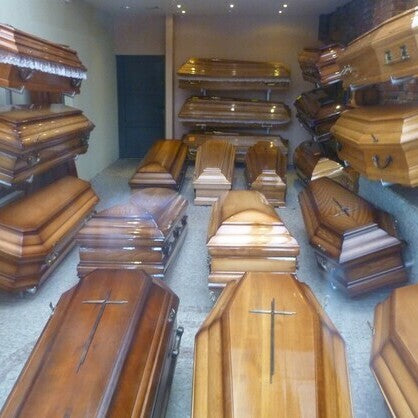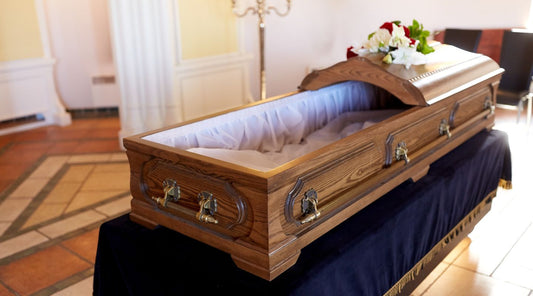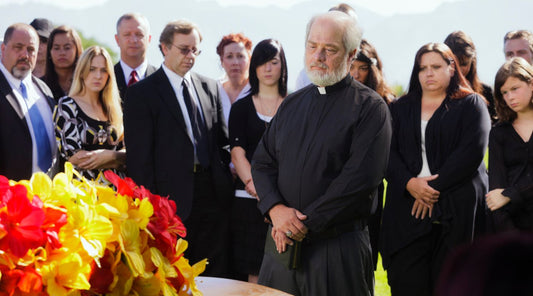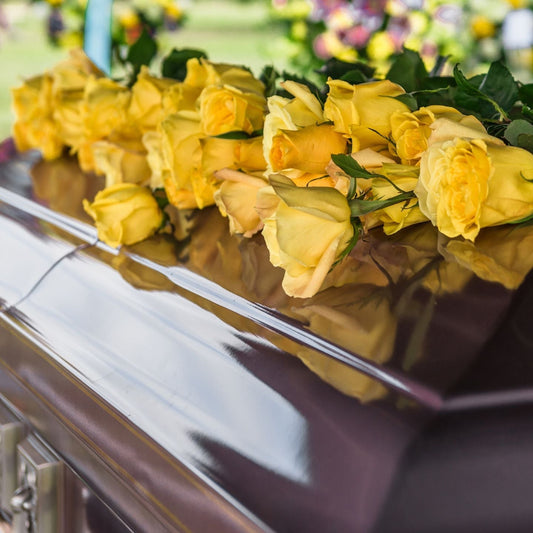
Cremation Caskets vs. Burial Caskets - Everything to Know
Families often choose different ways of finding closure and expressing their final goodbyes to a loved one's passing. A deceased person's funeral service may end with a burial, cremation, or entombment, depending on the deceased's wishes or religious values. Naturally, the type and location of the departed's resting place also determine the type of casket best suited for the purpose.
In most instances, families may pick a combustible casket if the deceased's remains are headed to the crematorium. Alternatively, they may use caskets with other materials and designs if the departed's remains are to be buried or hidden in a tomb.

But can't the same type of caskets serve in both instances? Here's all you need to know.
Cremation Caskets and Burial Caskets: What are they?
To better understand how to buy a right casket, first, let's understand why these two caskets differ depending on their purpose.
Cremation Caskets
A cremation casket is a type of casket that's built and designed for cremation. These caskets come with fully combustible materials and simpler, less ornate designs.
Many people wish their remains to be burned in a cremation chamber or funeral pyre. Family members may collect some of the ashes and preserve them in an urn to hold in memory, while some deceased may wish to have their ashes sprinkled in the sea.
Either way, the physical remains must be incinerated first, and families usually use an alternative container made out of a wood cremation casket that's combustible and specially made for the crematorium. Depending on your location, funeral homes or casket companies may call it a cremation container, cardboard box, or simply a cremation casket.
Burial Caskets
Burial caskets, on the other hand, are meant for placing the deceased's remains into the ground. Reasons may differ depending on your culture, religious beliefs, or practical preferences. They are made of stronger, sturdier, and more durable materials compared to caskets meant for cremation.

For instance, the casket serves to preserve the body's remains for as long as possible. Other times, it's a symbol and manner of honoring the dead's remains by isolating them from the outside elements and the soil's pressure. A coffin or casket may also provide easier handling or transportation of the physical remains.
Primary Differences Between a Cremation Casket and Burial Casket
Construction and Materials
Cremation caskets(cremation container) come with materials that burn easily and incinerate with ease. In most instances, it comes with wooden construction, and the timber used is not the expensive variety since the container is meant for burning. Many funeral homes may also suggest the use of environmentally friendly wood and materials that do not cause excessive air pollution on combustion.

Burial caskets may come in a wide variety of materials depending on the deceased or the family's preference, style, religious values, and budget. Rich mahogany, oak, cherry, and other premium woods are common choices for many families. Others may resort to steel caskets for extended preservation. Today, you can even get PVC caskets that ensure prolonged preservation but may not be environmentally friendly.
You can purchase an eco-friendly casket for cremation or burial. These green caskets come with environmentally friendly material meant for green burials.
Appearance and Aesthetics
Cremation caskets do not have too many design elements or visually appealing parts because they're meant to burn during the cremation process. A simple, rectangular cardboard box is often all that's needed because the material remains fully combustible yet still allows the loved one to enclose the body with dignity. Elsewhere, you may purchase caskets made of fully combustible willow and suitable for the in cremation.

Burial caskets come with more visually appealing elements and designs than crematory caskets. These caskets are much more ornate and carry more embellishments that reflect the departed's style, sentiments, or symbols. They may carry engravings, wood work, or metal work that enhance the appearance.

Funeral homes may offer attractive rental caskets that you can use for the ceremony and replace with a cardboard box before cremation. The only issue is that the rental casket often can cost the price of the individual wood cremation casket sold by casket companies like Trusted Caskets.
Paddings and Interiors
Cremation caskets contain simple interiors, often with a simple lining or basic padding. The interiors are not as ornate or intricate as burial caskets because these caskets are not meant for others to see or observe.
Burial caskets may have plush interiors ranging from simple to luxurious fabric padding. Lavish linings, intricate embroidery, and premium fabrics may all be a part of burial caskets that reflect comfort, safety, and status.
Pricing and Affordability

The price is an obvious difference you should expect between a fully combustible cremation casket and a casket you purchase for the funeral service and burial together. The cremation casket is more affordable since it's made from materials meant to undergo cremation.
On the other hand, there's no upper limit to the price of burial caskets depending on their make and design. Pillow designs, sustainable materials, metal parts, and luxury elements may all drive up the cost and price charged by the funeral home.
Sealing and Handles

A cremation casket normally does not feature tight sealing mechanisms. The covers and hinges have to be good enough for a funeral service. But they need not have the same sturdiness you expect in a burial casket. The cremation casket your funeral home provides may have removable handles that come off before entering the cremation chamber. On the other hand, Trusted Caskets offers specially designed cremation casket models that can be used as it is, and look almost like a burial wooden casket. People often use models like Classic, or Elizabeth to held a memorial service prior crematorium process started.
A traditional casket meant for burial will come with air-tight sealing and strong edges to hold the cover and casket together. Traditional caskets will normally get buried several feet below the ground, which means it also has to carry the weight of the soil refilled in the space. Even Jewish caskets (made fully out of wood), with no metal hinges or nails, must be sturdy enough to carry the body and hold the soil's weight.
Closing Note

Cremation caskets and burial caskets can be worlds apart in construction, design, and price, depending on your requirements. Choosing the right rental casket may save you money while getting to use a premium casket for the ceremony and a cheaper casket for the cremation.
Either way, your loved one's funeral service can remain meaningful and consoling regardless of the casket's material, design, or aesthetics. Remember to consider the differences between these two casket types to ensure a cost-effective, efficient, and practical funeral plan.


